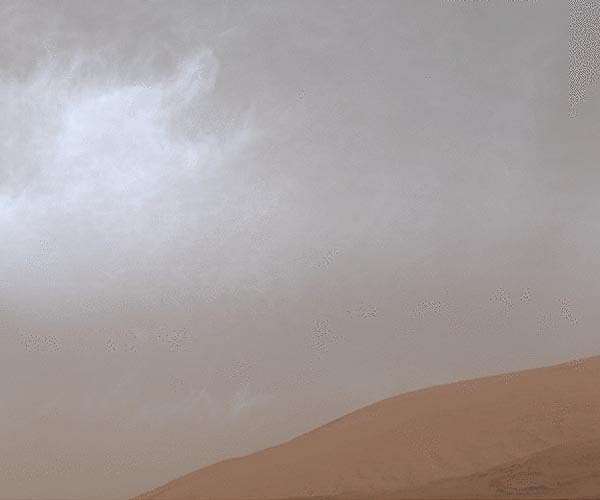15.09.2024

Researchers and cloud enthusiasts now have a new resource to explore unique cloud formations on Mars. The German Aerospace Centre (DLR) in Berlin has developed a comprehensive 20-year database of cloud and storm images, providing scientists with deeper insights into Martian atmospheric features. The "Mars Cloud Atlas" is now available to the public at https://hrscteam.dlr.de/public/data.php. Daniela Tirsch of DLR presented this new tool during the Europlanet Science Congress (EPSC) 2024 in Berlin.
The images in the atlas were captured by the High Resolution Stereo Camera (HRSC), which has been orbiting Mars on the European Space Agency's (ESA) Mars Express spacecraft since 2005. Despite Mars' thin atmosphere, clouds and dust storms, formed from water, carbon dioxide ice crystals, and dust particles, are prevalent.
"Clouds on Mars are just as diverse and fascinating as those we see in our skies on Earth, with some features unique to the Red Planet. One of my favourite phenomena are the beautiful 'cloud streets' - linear rows of fleecy clouds that develop around the huge volcanic Tharsis rise and the northern lowlands in northern spring and summer. While they resemble cumulus clouds on Earth, they are formed under different atmospheric conditions," said Dr Tirsch. "We also see impressive dust clouds that can spread hundreds of kilometres - a phenomena we luckily don't experience on Earth."
Dust plays a pivotal role in Mars' atmosphere and climate. Occasional upwelling events leave dust-laden clouds suspended in the atmosphere. Seasonal changes cause significant temperature and pressure shifts, generating powerful winds that lift dust from the Martian surface. Dust clouds often take on the appearance of volcanic eruption clouds when they emerge from the tops of the giant Martian volcanoes, though these volcanoes are no longer active.
Annually, large spiral dust storms and cyclone systems are visible near Mars' north pole. Understanding these atmospheric events is essential for scientists seeking to comprehend Martian air circulation patterns.
Gravity clouds, a formation common on both Mars and Earth, appear at mid-latitudes during winter in both Martian hemispheres and over the Tharsis volcanic plateau during the southern winter. These clouds form lee waves - repeating ridge formations that arise when winds blow over ridges and mountains.
Certain cloud types are associated with specific locations and seasons on Mars, while others, such as 'twilight clouds,' can form at any place and time of year during early morning hours.
The HRSC Cloud Atlas offers valuable data about the physical properties, timing, and location of clouds and storms, helping scientists to better understand Mars' climate cycles and atmospheric dynamics. This data will also aid in comparative studies of the atmospheres of other planets, including Earth and Venus. Already, DLR researchers have used the database to produce global maps displaying the seasonal and geographical occurrence of various cloud types.
"As Mars Express has been extended by ESA until at least 2026, this will enable us keep filling this database and refine even further our understand of Mars atmosphere," said Dr Tirsch.
Quelle: SD
